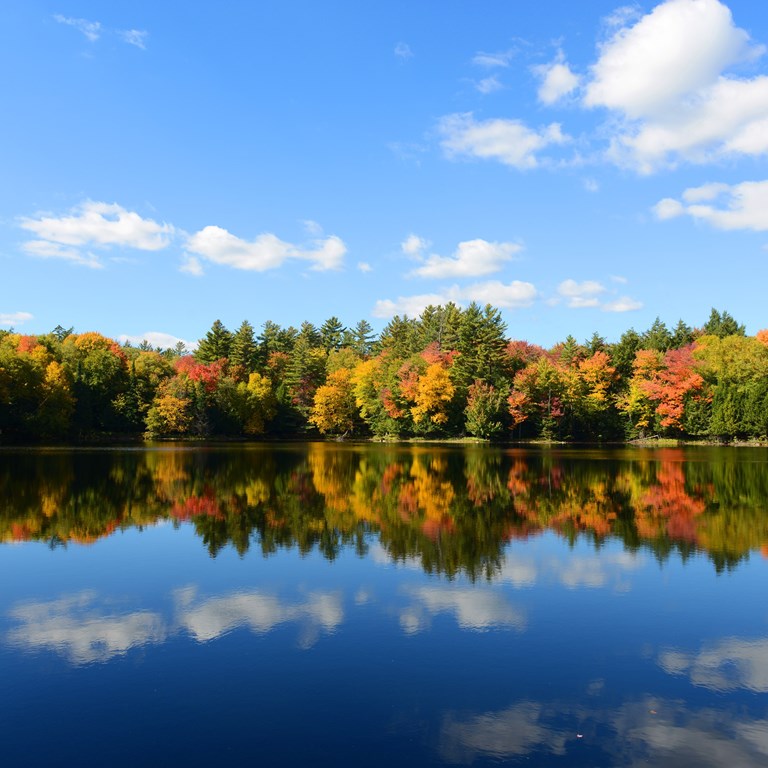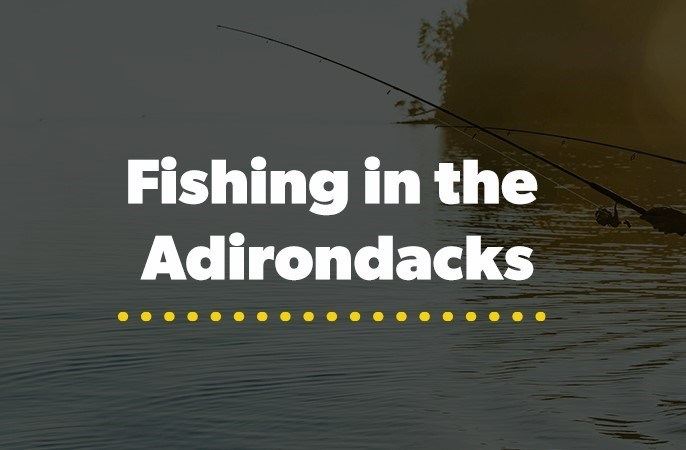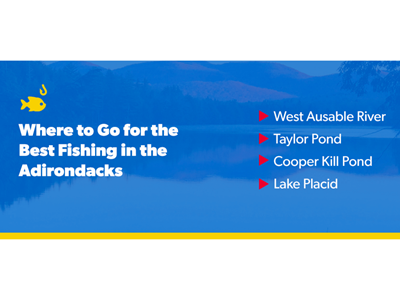Your cart is empty!
Make checkout easy by booking all your reservations at once. Add your sites from different campgrounds into your shopping cart* and then choose checkout.


Fishing in the Whiteface region of the Adirondacks means your choice of any of the region's freshwater lakes, rivers, ponds or streams, each filled and primed for both bait angling and fly fishing. Visitors flock to the area each year for outdoor vacations and fishing adventures, with trout as the local catch of choice.
Learn more about fishing in Wilmington, NY, and the surrounding area and reserve a stay at Kampgrounds of America for front-row access to all the best spots.
Winter is snowy and frozen in the Adirondacks, so unless you are ice fishing, the best time to plan your excursion is after the ice has thawed and warmer temperatures return in the spring. As waterways shift back to their moving state, fish become more active near the surface. If you visit in the summer, be mindful of the temperature — mornings and evenings are the safest for all-day outings.
Optimal fishing conditions depend on what you are hoping to catch and if that species is in season. For example:
Check daily local fishing forecasts before leaving your campsite to get a better idea of how the weather, temperature and wind speed could impact your catch.
Trout and walleye are two of the most popular fish in the Wilmington and Whiteface regions. Rivers and lakes are stocked or stock-extended, with the exception of wild trout streams. The New York State Department of Environmental Conservation (DEC) preserves the wild trout streams to keep the native brook trout populations safe from alteration and to provide guests with an authentic wild trout fishing experience. Other trout here include rainbow, brown and lake trout.
DEC hatcheries stock and manage walleye populations in bodies of water across New York, producing hundreds of thousands of fingerlings in the fall and spring.
Aside from these two common catches, you could also hook:

With so many places to choose from, the best way to narrow your options is to consider the type of fish you are seeking and researching which lakes or rivers you can find them. Some places — like Lost Pond in Ticonderoga or Lake Colby in Saranac Lake — are teeming with trout, while other places cater more toward those seeking walleye or salmon.
Locals and tourists alike praise the following places for their stocked, clean waters and scenic surroundings:
Other well-known locales include Black River, Horseshoe Lake, Union Falls Flow and Delta Lake.
If you are a devoted angler, you probably already have the essentials, like your rod and reel, release hooks, sunglasses, fishing line or fly line, a tackle box, wading boots, sinkers and bait, as permitted. If you are fly fishing, stop by the local tackle shop and ask if they have a hatch chart or recommendations for the best fly to use.
Since fly fishing in Wilmington, NY, and the surrounding area is such a popular activity, be sure to familiarize yourself with space-saving techniques to use in crowded areas. For example, if you do not have room to backcast in a densely populated lake or an area with low-hanging branches, you will need to roll cast your pole by flicking the rod up, leaving the line hanging by the side in the shape of a capital "D."
Trout fishing in the Whiteface region is very popular in the warmer months, meaning some areas can become overcrowded quickly. Escape the crowds and find a new favorite spot by hiking a few minutes beyond common tourist destinations or setting up next to a feeder creek, spring or waterfall. If you are fishing a pond, focus your attention near logs, inlets and outlets or near steep underwater drop-offs. When in doubt, stop by the local hangout spot and talk to the locals to see which ponds and lakes they consider hidden gems.
Everyone 16 and older must have a New York fishing license before casting in any public lake, pond, river or stream, except for special free fishing events, clinics and those at licensed fishing preserves. One-day, seven-day and annual licenses are available for a resident or non-resident fee, and proof of residency is required. You can purchase a freshwater license at an official License Issuing Agent and online through the DEC.
Each region has separate restrictions for species and catch limits and property regulations — check the DEC fishing guide and local postings to learn more. Never fish outside of the species' open season and only go ice fishing in areas where it is explicitly permitted.
Always abide by the seven Leave No Trace principles to minimize your outdoor impact, preserve nature and foster a welcoming environment for other anglers:
Whether you come to the Adirondacks for trout, walleye, salmon or just to get out of the city and relax by the water, KOA is here to help. Reserve a stay and make KOA your basecamp for your fishing adventure, complete with clean restrooms with hot water and fun on-site amenities like a pool, fishing and planned activities.
Learn more about available lodging options and call us to plan your stay today!

That doesn't mean this area has to always be empty. When you start reviewing camping options, your history will display here to help compare sites and find the best stay. You will be able to share your stay information with friends or family and save it for a later time if you have a KOA Account.
Make checkout easy by booking all your reservations at once. Add your sites from different campgrounds into your shopping cart* and then choose checkout.